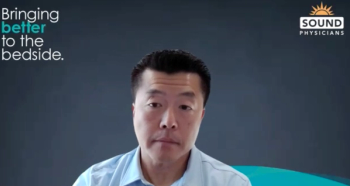
Health Disparities, Access, Innovation Continue to Be Trends in Health-System Pharmacy: Dr Marie Chisholm-Burns
Some of the latest trends in the health-system pharmacy space are ones that have already been around for a while, and organizations will need to understand how to address them at the local level, explained Marie A. Chisholm-Burns, PharmD, PhD, MPH, MBA, FCCP, FASHP, FAST, executive vice president and provost at Oregon Health and Science University.
Every year, ASHP Foundation publishes a report on the latest trends in the pharmacy space. Some of the latest trends are ones that have already been around for a while, and organizations will need to understand how to address them at the local level, explained Marie A. Chisholm-Burns, PharmD, PhD, MPH, MBA, FCCP, FASHP, FAST, executive vice president and provost at Oregon Health and Science University at the American Society of Health-System Pharmacists’ Midyear Clinical Meeting & Exposition.
Are there any trends identified in the latest ASHP Foundation Pharmacy Forecast report that were also in a previous report and continue to be a key area of development?
Yeah, I think trends on health disparities. Trends on access is there. Trends on the delivery of education, the delivery of health services, the cost. Perhaps even shortages. A hint of, maybe especially now with this year’s forecast, the mistrust. That's kind of a cultural thing. It’s part of the norm of behavior. That's going to take a while to work out and to gain trust again. We might see some of that.
I think innovation is another one that we're going to see. Medication safety in some form or another is a trend. But I think innovative deliveries, shortages, the workforce. I think the workforce is one that we're going to continue to see. Now, this is just my guess, but we're in different times as it relates to workforce, right?
So those are some things that I think are yet to come and that had been in our past for a while.
How can organizations take the identified trends that are happening at the national level and address them in ways that might be specific to their region or state?
I'll give you an excellent example. I talk about this all the time. You look at these national trends, I think the mental health care shortage or access problem is a huge one. It affects every sector of our lives, from our kids to the aging population; K through 12, postsecondary education; health care and providing access; workers; it affects the homeless or houseless population—so very important. If we can increase access, that will be something awesome to do.
You look at where the access is most constricted, of course, is in our rural areas, and lots of places, lots of states have rural areas. I encourage everyone to look at their state, and then look at the communities that they serve. And then try to come up with strategies if they're having an access issue—and my hypothesis would be that most places have an access issue, even urban environments—and look at ways that we could be innovative. It might be encouraging people to get into the mental health field. It might be incentivizing people. Maybe we should do more loan replacements and things of that nature to incentivize that. Using innovative technologies to get into those areas.
See what you have in your community and look at strategies to improve that. At least take the national trends and see, “Hey, how does that affect me?”
Newsletter
Stay ahead of policy, cost, and value—subscribe to AJMC for expert insights at the intersection of clinical care and health economics.









































